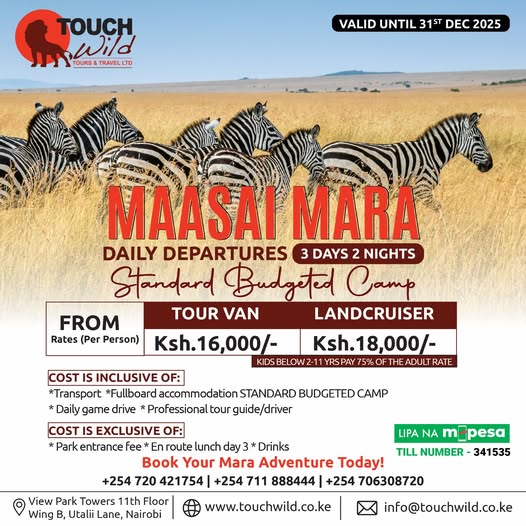1. The Epic Scale of the Migration
Witness the Great Migration: Nature’s Greatest Show sheer number of animals participating in the migration is astounding-millions of hoofed herbivores moving in vast, thundering herds. This journey spans nearly 1,800 miles, crossing the Serengeti in Tanzania and entering the Maasai Mara in Kenya between July and October. The ground literally trembles as the herds pass, offering an immersive experience of raw, unfiltered nature.
2. The Drama of the Mara River Crossing
Perhaps the most iconic moment of the Great Migration is the Mara River crossing. Here, thousands of wildebeest and zebras brave strong currents and lurking crocodiles in a desperate bid to reach greener grazing lands. It’s intense, emotional, and unpredictable-every crossing tells a different story of courage, chaos, and survival.
3. Predator-Prey Encounters
With the migration comes the inevitable pursuit by predators. Lions, cheetahs, hyenas, and crocodiles follow the herds, turning the plains into a real-life wildlife documentary. These dramatic scenes, especially during the river crossings. It reveals the delicate balance of nature and offer powerful photographic moments for safari-goers.
4. Best Time to Visit the Maasai Mara
The migration enters the Maasai Mara around July and remains until October, making these months the best time to witness the action in Kenya. This period also features dry weather, and unforgettable sunrise and sunset game drives-ideal conditions for both adventure and photography.
Witness the Great Migration: Nature’s Greatest Show is not just a trip-it’s an emotional and awe-inspiring reminder of the power and beauty of the wild.


